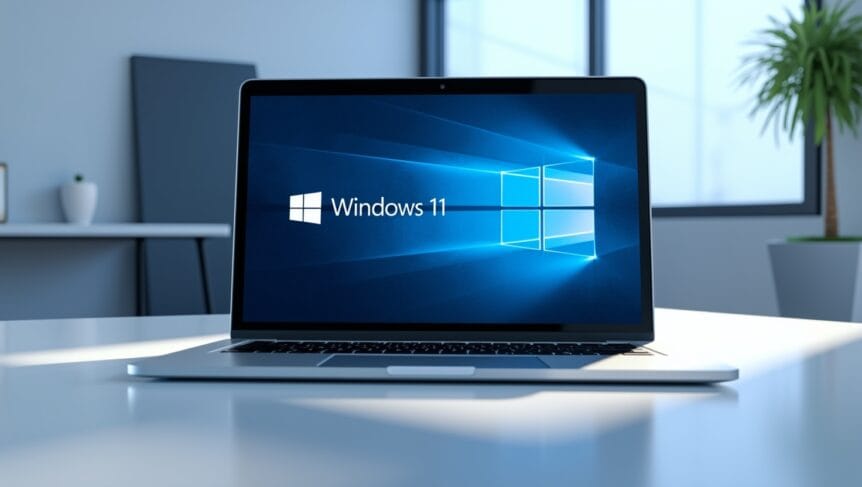As Windows 10 approaches its final chapter, businesses face a critical technology transition. Microsoft has officially set October 14, 2025, as the end-of-support date for Windows 10, giving organizations less than five months to prepare for this significant change. This comprehensive guide will help you understand what this means for your business and how to successfully navigate the migration to Windows 11.
Understanding Windows 10 End of Life and What It Means for Your Business
After serving as Microsoft’s flagship operating system since July 2015, Windows 10 will reach its end of life on October 14, 2025. But what does “end of life” actually mean for your business?
Simply put, Microsoft will no longer provide security updates, bug fixes, or technical support for Windows 10 after this date. This isn’t just a minor technical footnote; it represents a fundamental shift in the security posture of your business technology infrastructure.
Microsoft’s decision aligns with standard industry practices of retiring older software to focus resources on newer platforms. The company is strategically directing users toward Windows 11, which offers enhanced security features, improved performance, and modern functionality that Windows 10 simply cannot support.
Many business owners wonder if they can simply continue using Windows 10 indefinitely. While your computers won’t suddenly stop working on October 15, 2025, running an unsupported operating system creates serious vulnerabilities that grow more dangerous with each passing day.
The Critical Security Risks of Staying on Windows 10
The most immediate concern with continuing to use Windows 10 after support ends is the complete absence of security updates. This means any new vulnerabilities discovered will remain unpatched, creating permanent openings for cybercriminals to exploit.
Consider the WannaCry ransomware attack of 2017, which primarily targeted organizations running unsupported Windows versions. This single attack affected over 300,000 computers across 150 countries, causing billions in damages. Without security patches, Windows 10 systems will face similar or worse threats after October 2025.
Beyond malware and ransomware risks, businesses will also experience:
- Increasing system instability and performance issues
- Growing compatibility problems with newer software
- Rising IT support costs as problems multiply
- Potential data breaches that could devastate your business reputation
Compliance and Regulatory Implications
For many industries, running unsupported operating systems isn’t just risky; it’s prohibited by regulatory standards. Healthcare organizations must maintain HIPAA compliance, which explicitly requires supported operating systems to protect patient data. Violations can result in severe financial penalties and legal consequences.
Similarly, any business handling European customer data must comply with GDPR requirements, which mandate appropriate technical safeguards for personal information. Unsupported systems fail to meet this standard.
Businesses processing credit card payments face additional challenges, as PCI DSS standards require maintained and properly patched operating systems. Non-compliance can lead to increased processing fees, fines, or even loss of card processing privileges.
Beyond direct regulatory consequences, cyber insurance policies typically exclude coverage for preventable incidents involving unsupported software. This creates a double financial risk: increased likelihood of a security incident coupled with no insurance protection when it occurs.
Preparing Your Business for Windows 11 Migration
With less than five months remaining before Windows 10 support ends, creating a comprehensive migration plan is now a business priority. Begin by establishing a realistic timeline that accounts for your organization’s specific needs, potential hardware upgrades, and software compatibility testing.
Budget considerations should include:
- Hardware upgrades or replacements for incompatible devices
- Software updates or alternatives for incompatible applications
- IT support resources for the migration process
- Employee training on Windows 11 features and changes
Identify your mission-critical business systems and applications first, as these should receive priority in compatibility testing and migration planning. This focused approach helps maintain business continuity throughout the transition.
Hardware Compatibility Assessment
Windows 11 has more stringent hardware requirements than Windows 10, which means some of your current devices may not be compatible. Key requirements include:
- Processor: 1 GHz or faster with 2+ cores on a compatible 64-bit processor
- Memory: Minimum 4GB RAM (8GB recommended for better performance)
- Storage: At least 64GB available storage
- System firmware: UEFI, Secure Boot capable
- TPM: Version 2.0
- Graphics: DirectX 12 compatible with WDDM 2.0 driver
- Display: High definition (720p), 9+ inch screen, 8 bits per color channel
To check if your current devices meet these requirements, use Microsoft’s PC Health Check app. This tool provides a comprehensive assessment of your hardware compatibility and identifies specific issues preventing upgrades.
For businesses managing multiple devices, inventory management tools can help streamline this process. Once you’ve identified compatible and non-compatible devices, you can make informed decisions about which machines to upgrade and which to replace.
Software and Application Compatibility
Hardware compatibility is just the first step; you must also ensure your business-critical applications will function properly on Windows 11. Start by creating a comprehensive inventory of all software used across your organization, prioritized by business impact.
Contact vendors of your essential applications to confirm Windows 11 compatibility. Many software providers have already updated their products for Windows 11, but some legacy applications may require updates or alternatives.
Develop a testing protocol for critical applications, including user acceptance testing before full deployment. This helps identify potential issues before they impact your operations and gives you time to find solutions.
Your Windows 11 Upgrade Options and Strategies
When it comes to the actual upgrade process, businesses typically choose between two primary approaches: in-place upgrades or clean installations.
In-place upgrades preserve existing applications, settings, and files while upgrading the underlying operating system. This approach minimizes disruption and reduces deployment time, making it ideal for most business environments. However, existing system problems may persist after the upgrade.
Clean installations provide a fresh start by completely replacing the existing operating system. While this approach requires reinstalling all applications and reconfiguring settings, it often results in better system performance and eliminates lingering issues from the previous installation.
Most organizations benefit from a phased rollout strategy rather than upgrading all systems simultaneously. Consider starting with non-critical systems or a pilot group of technically proficient users who can provide feedback before company-wide deployment.
Step-by-Step Upgrade Process
Before beginning any upgrade, complete these essential preparation steps:
First, back up all important data to prevent potential loss during the upgrade process. While in-place upgrades typically preserve files, unexpected issues can occur.
Next, check for and install all available Windows 10 updates before attempting the upgrade to Windows 11. This ensures your system is in the best possible state for the transition.
For compatible devices, the simplest upgrade path is through Windows Update:
- Go to Settings > Update & Security > Windows Update
- Check for updates
- If eligible, you’ll see an option to download and install Windows 11
- Follow the on-screen instructions to complete the installation
For devices that don’t meet all requirements, alternative installation methods exist, including using the Windows 11 ISO file and modifying registry settings to bypass certain hardware checks. However, these approaches may affect system stability and security.
After upgrading, verify all systems and applications are functioning properly, and address any configuration issues before moving to the next device in your migration plan.
Managing Non-Compatible Devices
For older hardware that cannot run Windows 11, several options exist:
Microsoft offers Extended Security Updates (ESU) for an additional year beyond the end-of-support date, extending basic security protection until October 2026. However, this program requires eligible licenses and comes with additional costs that increase over time.
Hardware replacement is often the most straightforward solution for non-compatible devices. Begin procurement planning immediately, as supply chain delays may extend delivery timelines as the deadline approaches and demand increases.
For specialized equipment or budget constraints, consider isolating non-upgradable systems from your network and implementing additional security measures to minimize exposure until replacement is possible.
Minimizing Business Disruption During Migration
A successful migration minimizes impact on your business operations. Schedule upgrades during periods of lower activity when possible, and communicate clearly with all stakeholders about the timeline and potential temporary disruptions.
Provide training resources for employees before the migration to familiarize them with Windows 11’s interface changes and new features. This proactive approach reduces productivity losses and support requests after the upgrade.
Establish dedicated support procedures during the transition period, including clear escalation paths for urgent issues. Having technical resources readily available helps quickly resolve problems that might otherwise impact business operations.
Ensuring Business Continuity
Maintaining productivity during the upgrade process requires careful planning and communication. Create detailed rollback procedures for each phase of the migration in case critical issues arise that cannot be immediately resolved.
Implement staggered migration schedules to ensure core business functions remain operational throughout the transition. For example, upgrade half of a department’s computers first, then complete the remainder after confirming everything works correctly.
Maintain regular communication with employees, customers, and partners throughout the migration process. Setting realistic expectations about potential temporary disruptions helps reduce frustration and maintains trust during the transition.
Taking Action: Your Next Steps
With less than five months remaining before Windows 10 support ends, immediate action is essential. Begin by conducting a complete inventory of your current hardware and software assets to identify upgrade requirements.
Develop a prioritized migration timeline based on business criticality, hardware compatibility, and resource availability. Focus initial efforts on systems handling sensitive data or customer-facing operations.
Allocate budget for necessary hardware replacements or upgrades, and begin procurement processes as soon as possible to avoid potential supply constraints near the deadline.
The long-term benefits of completing this migration extend beyond simple compliance; Windows 11 offers enhanced security features, improved performance, and better compatibility with modern applications that can positively impact your business operations for years to come.
Getting Professional Help
While some businesses have the internal resources to manage this migration, many will benefit from professional assistance. Consider seeking expert help if:
- Your organization lacks dedicated IT staff with operating system migration experience
- You have complex network infrastructure or specialized business applications
- Regulatory compliance requirements add complexity to your migration needs
- You’re concerned about maintaining security and business continuity during the transition
When selecting an IT service provider for migration assistance, ask about their experience with similar projects, their approach to minimizing business disruption, and their post-migration support options.
Professional migration partners can develop customized strategies that account for your specific business needs, compliance requirements, and budget constraints. Their expertise often helps identify potential issues before they impact your business and implement solutions that might otherwise be overlooked.
As the Windows 10 end-of-support deadline approaches, proactive planning and execution will distinguish businesses that experience a smooth transition from those facing last-minute challenges and potential security exposures. By starting your Windows 11 migration journey today, you position your organization for continued technological security and operational excellence.





